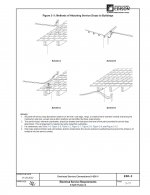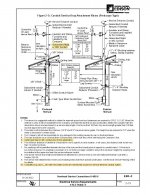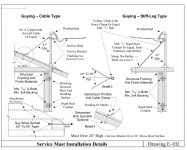randyheggem
New User
- Location
- Minnesota
- Occupation
- Electrician
Where exactly in the NEC does it explicitly say you cannot use EMT as a service mast? 230.28 only speaks to being of adequate strength or be supported by braces to withstand the strain. It doesn't say specifically no EMT. I cannot find a code article listing approved wiring methods for service masts. 230.3.B is only applicable for underground service conductors. In 358.12 for EMT uses not permitted it says nothing of service masts. I know according to my internet searches EMT cannot handle the high levels of fault current which could fall under 358.12.1 but that isn't very specific and subjective due to the fact RMC cannot withstand the levels of fault current either and RMC is able to be used as a service mast. Is it written in the MN residential building code somewhere or do the manufactures of EMT state their product will not work for use as a service mast?



